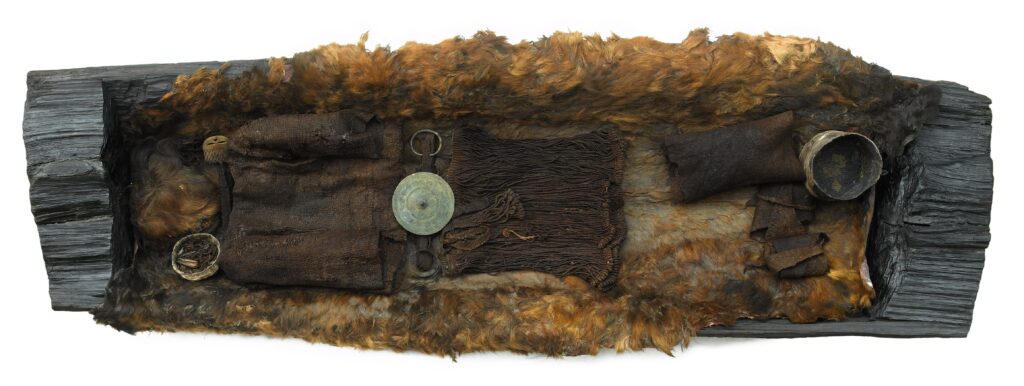In the Bronze Age, care was taken to ensure that the dead received supplies on the journey to the afterlife, and the Egtved girl received, among other things, a birch bark bowl with an alcoholic beverage fermented on honey. 100 years ago – exactly February 24, 1921 – farm owner Peter Paltz put the shovel in the ground to remove a burial mound on his property. Here he came across the wooden coffin with the Egtved girl, who was buried about 3,390 years ago. In the coffin was a birch bark vessel with a dried-in black sticky mass, which has subsequently been analyzed. It turned out to be a dried alcoholic beverage, with traces of pollen from lingonberries, porse, malted wheat and summer honey with a large amount of linden.
Mead turned into beer
For many years, archaeologists agreed that she had been given mead on the journey of eternity. It makes good sense, as mead is known to be an alcoholic beverage based on fermentation of honey, but her beverage was not only based on honey but also on malt, which is the basis of brewing beer.
Recently, professionals have begun to describe her drink as a beer, and it hurts a little in a mead brewer’s ear, because quite obsessed is a brew that includes both honey and malt – a BRAGGOT, and is one of the six main categories of mead.
From beer to a real braggot
In 2019, we set out to recreate Egtvedpigen’s drink based on a mead tradition. It happened after we at Snoremark Meadery in collaboration with the National Museum had recreated the oldest find of mead in Denmark, which is fermented only on linden honey and the plant meadowsweat (Snoremark bronze mead).
In our braggot about 1/3 of the initial sweetness is from the malting, while the remaining part comes from honey and lingonberries. The requirement for a braggot is that the majority of the sugar that is fermented comes from honey, and that the sugar in the malt makes up a maximum of 50% of the total sugar level.
Historically, all mead contains one or more bitter herbs, and Egtvedpigen’s mead does not differ from tradition. Her drink contains porse.
Micro oxygenation in claysjars
To get so close to the brewing process that has been possible in the Bronze Age, we acquired custom-made terracotta jars for fermentation. The jars are internally treated with beeswax in the same way as Egtvedpigen’s birch bark bowl.
We find that the teracotta jars give the same effect with micro-oxygenation as you get with oak barrels. When we compare the taste between the test brew from steel tanks and the brew from the terracotta barrels, there is a clear difference. The brew from the terracotta gives a more intense taste and the braggot gets more body and fullness. The result can best be compared to a slightly sparkling rose wine
Different methods
We are not the only ones who have tried to recreate the Egtved girl’s drink. A few years ago, the National Museum in collaboration with the brewery Skands developed “Egtvedpigens bryg”, which is a honey-sweetened wheat beer and produced based on the understanding of the beer process, where in addition to malt, hops are always included.
What is the correct reproduction is not possible to determine, as the analyzes can not provide an answer to the distribution between honey, malt, lingonberries and porse, or how the raw materials have been treated before the fermentation was started. It is most likely that the mixing ratio was also varied in the Bronze Age, but it is certain that for many hundreds of years a mix of honey, malt, lingonberries and porse was brewed in Denmark.
The juellinge woman
When the archaeologists analyzed the dried-up remains in the bronze kettle that the Juelling woman from Vestlolland took with her to the grave, they also found remains of a braggot that had been fermented on exactly the same raw materials.
She was buried about 2,000 years ago, so there are indications that it has been a highly valued beverage when, for more than 1,000 years, one has stuck to a mix of honey, malt, lingonberries and porse.
Danish national drink for 1,000 years
As a mead brewer, there is no doubt in my mind, both the Egtved girl, the Juellinge woman and their like-minded people have been drinking braggot, but it is up to the individual taste to decide which version you think has had the best opportunities to keep as a drink for over 1,000 years .
The find by Egtvedgirl will this year be marked with a special exhibition by the Vejle Museums, but you can already take a peek at video and new website from the museum.

